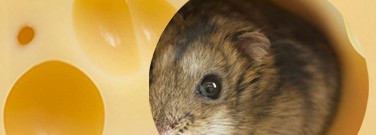Rodent Reactions to Fake Smells Offer Clues About Brain Function
By Ralph Birch
Scientists have discovered a way to implant an artificial odor into the brains of mice. Their work could provide clues about how our brains process information.
Details about the synthetic smell study will help answer fundamental questions about olfaction, according to computational biologist Saket Navlahka of Cold Spring Harbor Laboratory in New York.
The results of the study were first published earlier this year in Science. The findings give scientists a window into the processes used by the brain to shape signals from the outside world into perceptions and how those perceptions can guide behavior.
Making Fake Odors
To build the artificial smells, researchers used a process called optogenetics, a technique in which light prompts genetically engineered nerve cells to fire. Neuroscientist Dima Rinberg and his colleagues at New York University’s Grossman School of Medicine used optogenetics to target nerve cells in the olfactory bulbs of mice.
Within the olfactory bulbs, clusters of nerve endings called glomeruli organize the signals related to the differentiation of smells that are picked up inside the nose.
Rinberg and his team activated nerve cells in six locations, each of which included between one and three glomeruli, in a specific order. This neural pattern was designed to serve as a simplified version of what a real odor might smell like to a mouse.
Rodent Reactions
The mice in the study learned to signal their recognition of the artificial smell’s presence by licking one of two spouts. While the synthetic odor didn’t actually exist, the researchers observed the mice behaving as if it did.
After “smelling” the synthetic odor, the mice reliably licked the correct spout. When researchers mixed up the signals using the same optogenetic approach, the mice reacted differently.
By making slight changes to the signals that generate the artificial odor, researchers could test which qualities of the cell sequence were important and which ones rendered the smell unrecognizable to the mice.
Smart Sniffing
The beginning of the sequence turned out to be the key. When researchers swapped the order of the first few spots, the mice had more trouble identifying the smell than they did when spots later in the sequence were changed. Delaying the sequence at the beginning also made more difference than delays at the end.
“If you modify the first few notes, you more easily ruin the song,” Rinberg said.
Rinberg and his team want to further their research by following the synthetic smells to other parts of the brain, and then test where similar rules apply to real smells.
Discussion Questions
- Do you think scientists will be able to get similar results from the mice by using real smells rather than synthetic ones?
- Could this research method be applied to learning more about how brain function relates to our other senses?
Vocabulary
- olfaction
- optogenetics
- glomeruli
- neural



